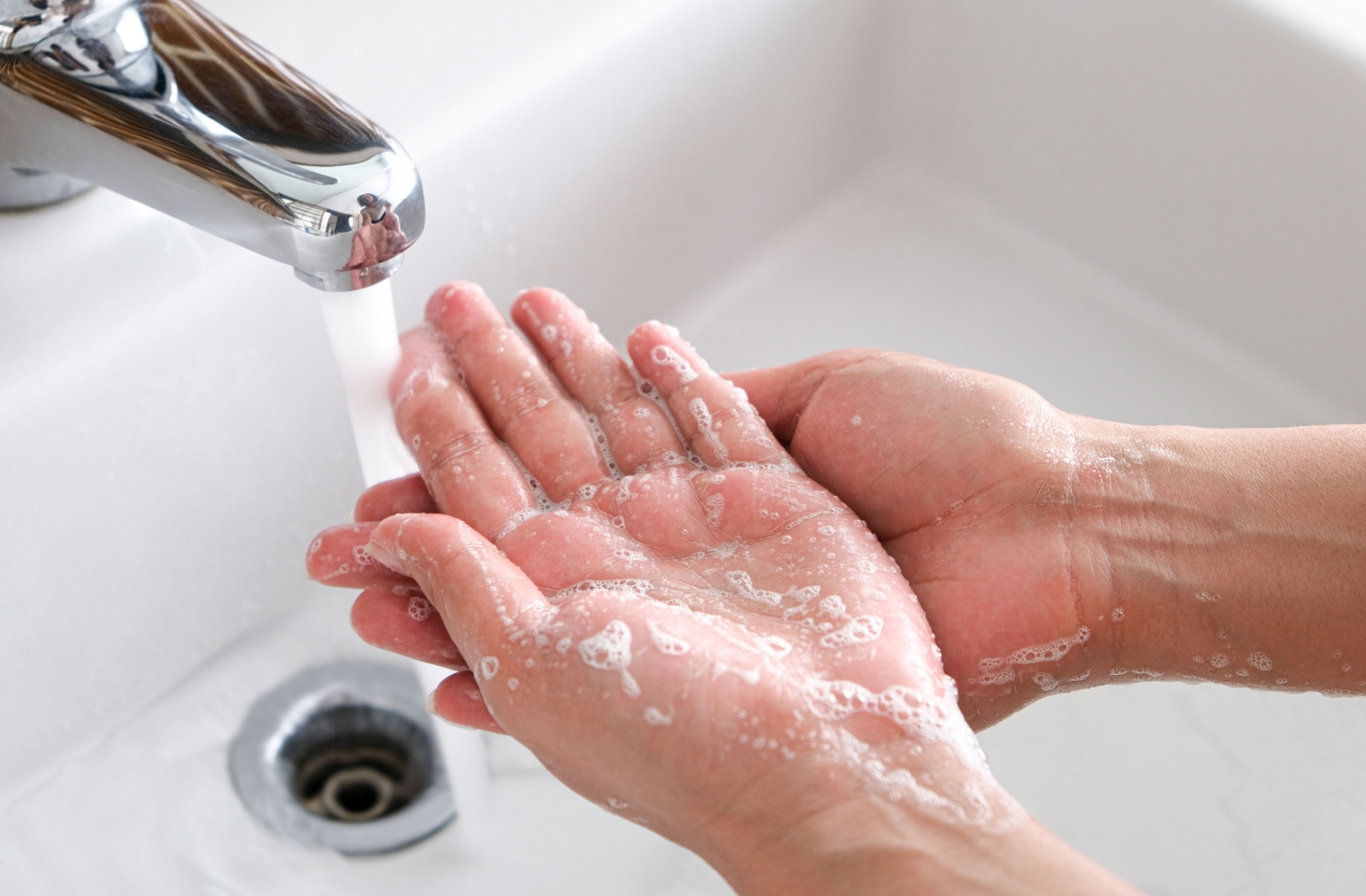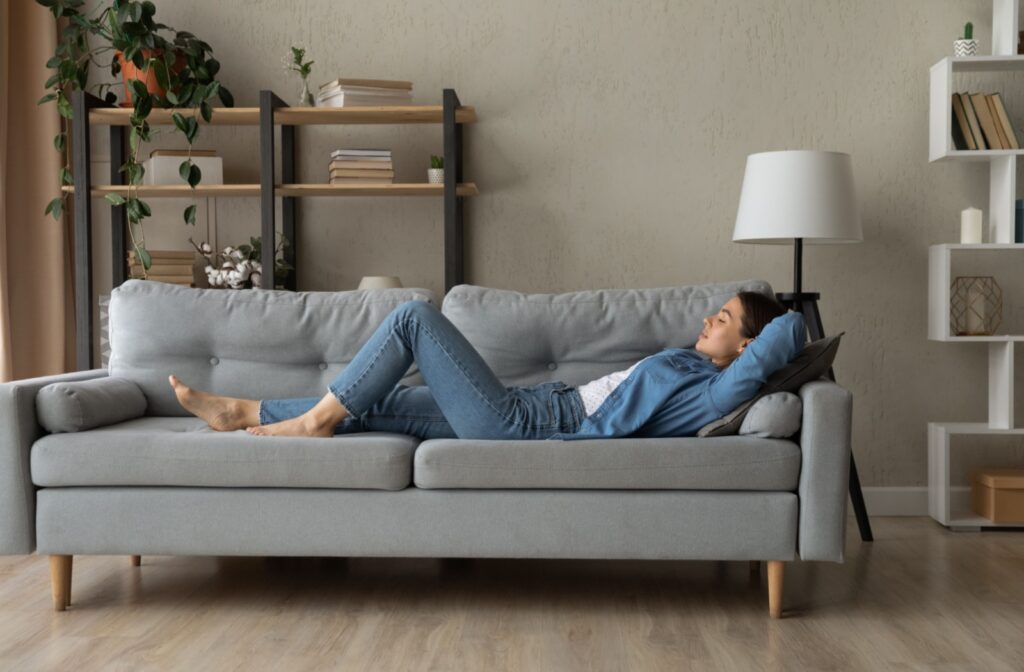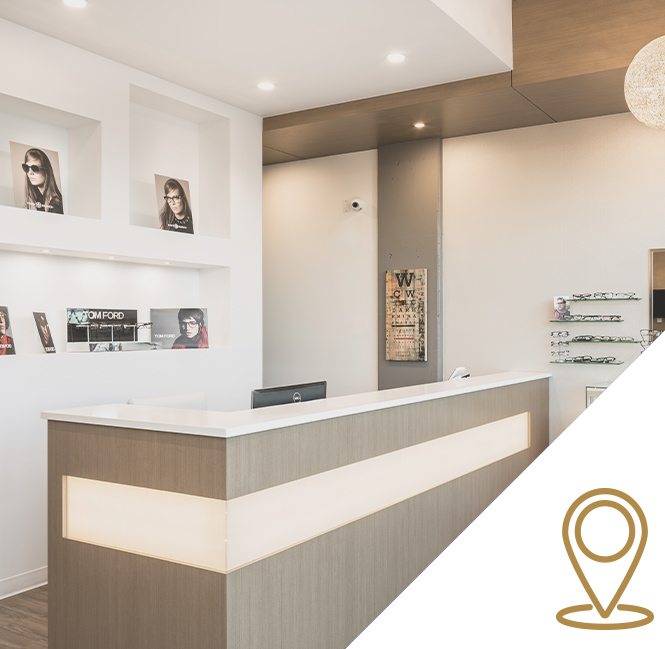As a contact lens wearer, taking a quick nap without removing your lenses may be tempting. However, this convenience can come at a cost to your eye health. While contact lenses offer numerous benefits over eyeglasses and come in extended wear options, it’s important to know the healthy practices for contact lens wearers.
You shouldn’t nap with your contacts in. Napping or sleeping with contact lenses can increase your risk of eye infections and possible discomfort, such as irritation. For eye health and safety, only wear your contact lenses for the duration your eye doctor recommends.
Why You Shouldn’t Nap with Contacts
Contact lenses sit directly on the cornea or the transparent front covering of the eye. They’re also designed to allow oxygen to reach the cornea.
However, if you nap or sleep in your contact lenses, it restricts oxygen from reaching the cornea. Sleeping in your contact lenses increases the risk of eye complications significantly.
Pain
Napping or sleeping in contact lenses can cause vision symptoms such as pain and light sensitivity. This results from a lack of oxygen and the contact lens rubbing on the cornea. While mild pain can go away on its own, severe eye pain that lasts for hours should not be ignored and could indicate a more serious complication in need of treatment, such as an ulcer or eye infection.
Corneal Ulcers
Corneal ulcers are open sores on the cornea and can be a result from regular napping in your contacts. Corneal ulcers are considered a medical emergency with extreme discomfort. While it’s treatable, corneal ulcers can lead to complications, such as vision loss.
Infection
Napping or sleeping with contact lenses can result in eye infections like pink eye (conjunctivitis) and keratitis. Bacteria buildup that grows on contact lenses can pass onto the cornea and lead to keratitis. When you nap in your contact lenses, there’s a higher possibility of a drier or scratched cornea, making it more susceptible to bacteria passing onto the cornea.
Redness
Similar to pain caused by sleeping in contact lenses, you can also experience eye redness and irritation. These symptoms often result from fewer tears produced when you sleep and the lack of oxygen, which can increase your risk of dry eye. Contact lens wear can also worsen dry eye symptoms.
Corneal Abrasions
Lack of moisture can dry contact lenses, which are more likely to rip or crack. Damaged contact lenses can scratch the cornea and cause a corneal abrasion. Symptoms of a corneal abrasion include eye pain, tearing, foreign sensation, and redness.
What to Do If You Napped with Contacts?
Sometimes, life throws us a curveball, and you might have forgotten your contacts where in when you lay down. If you find yourself in this situation, there are steps you can take to minimize the harm.
If you accidentally nap with your contacts in, a short duration shouldn’t cause much damage, and you can use lubricating eye drops to minimize dryness and irritation. It’s best to remove your contacts upon waking and give your eyes a break before reinserting them. Keep a pair of eyeglasses close by to make the switch from contacts to bare eyes or spectacles quickly and easily.
Are There Contact Lenses You Can Sleep In?
Yes, there are some contact lenses designed for you to sleep with. These lenses are called extended-wear contact lenses. They are soft contact lenses made for continuous wear for up to 30 days and nights without being removed. However, you will want approval and consultation from your eye doctor before using extended-wear contact lenses.
Another possibility are daily disposable contact lenses that eliminate the need for extended-wear contacts and provide a fresh daily lens.
Proper Contact Lens Care

Contact lens hygiene is non-negotiable to maintain healthy eyes and vision. It’s easy for wearers to become complacent, but you can avoid some problems associated with contact lens wear with the following measures:
- Maintain a consistent care and cleaning practice.
- Wash your hands thoroughly with soap and water before handling contacts.
- Use a lint-free towel when drying your hands.
- Use the correct type of contact lens solution.
- Insert and remove your contacts in the same order to keep from mixing them up.
- Replace your contacts as often as your eye doctor recommends.
- Replace your contact lens case regularly.
- Insert your contacts before you apply your makeup.
Vision Comfort & Contact Lenses
The temptation to keep your contacts in while you nap is certainly there, but the potential risks to your eye health make it a risky proposition. Avoid napping or sleeping in contact lenses to safeguard your eye health and preserve vision comfort.
For personalized recommendations for contact lenses that suit your vision needs and preferences, book an appointment with Willoughby Doctors of Optometry.











